At KXL Fighters’ Energy Barn
Mississippi River Basin
|
NEW ESRI StoryMaps: What's On Our Shelves & NWNL Song Library & No Water No Life ESRI |
Mississippi River Basin
Tom and Cathie Genung
Members of Bold Nebraska
Alison M. Jones
NWNL Director and Photographer
Tom Genung and his wife Cathie are active “KXL Pipeline Fighters.” They work further south on the same planned pipeline route as folks NWNL interviewed in Neligh, O’Neill and Page, Nebraska. They all share the same goals, but here in West Benedict, Nebraska, protesters are using an innovative approach to bring attention to the fact that oil is not the best way to supply energy. Rather, as used here, wind and solar can cleanly supply our needs without polluting our soils and water supplies – especially, in this case, water in the Ogallala Aquifer. This great US water resource spreads from the Texas Panhandle to the Nebraska Sandhills where this pipeline would run.
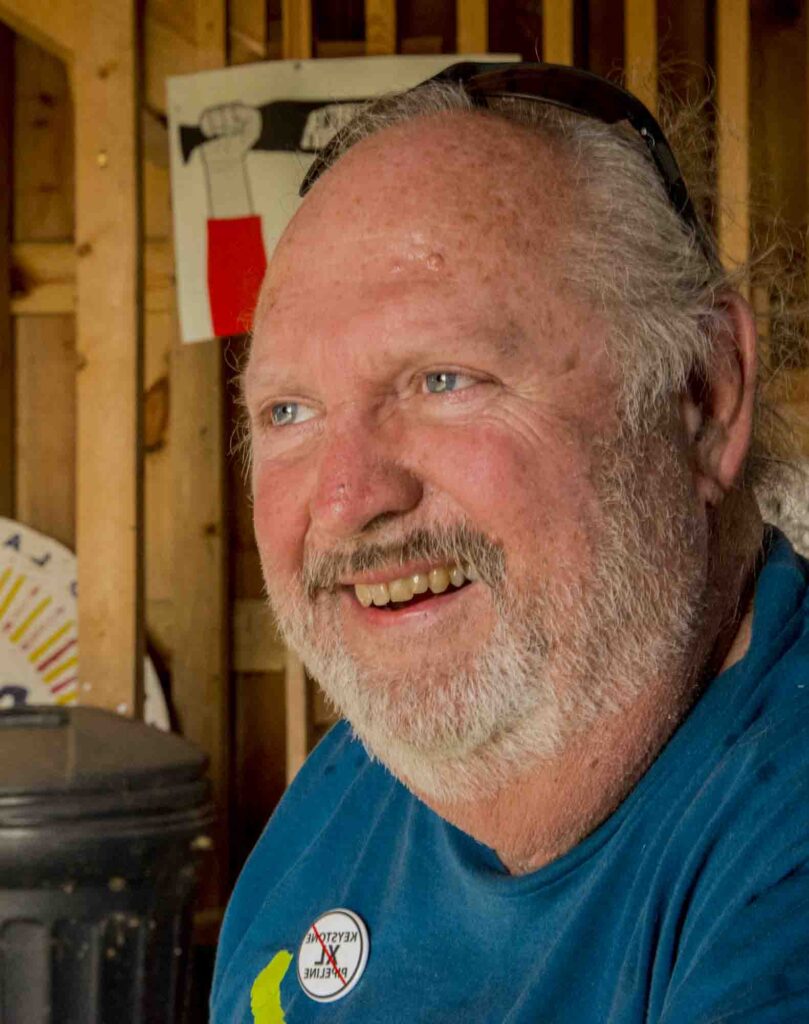
COMMUNITIES PRO & CON KXL
TRANS CANADA’S ALTERNATE PLANS
A FOCUS ON EMINENT DOMAIN
All images © Alison M. Jones, unless otherwise noted. All rights reserved.
ALISON JONES Tom and Cathie, thank you for meeting me here at the BOLD NEBRASKA “Energy Barn” on the route TransCanada would use for its Keystone XL oil pipeline. Can you describe this location?
TOM GENUNG We’re on the Hammond property, north of York and west of Benedict and in the energy barn built by Bold Nebraska and many volunteers over the course of (can you believe this?) two weekends!
ALISON JONES Yes, I heard that from Art Tanderup earlier today.
TOM GENUNG The materials are locally bought from a Wayne, Nebraska organization that delivered them for assembly. The south side has a Peace Garden put there by members of Nebraskans for Peace. The rebar crane was put together by an itinerant artist with the Great Climate March. On the north by that grove of trees and behind the windmill is where the proposed KXL route will run if allowed.
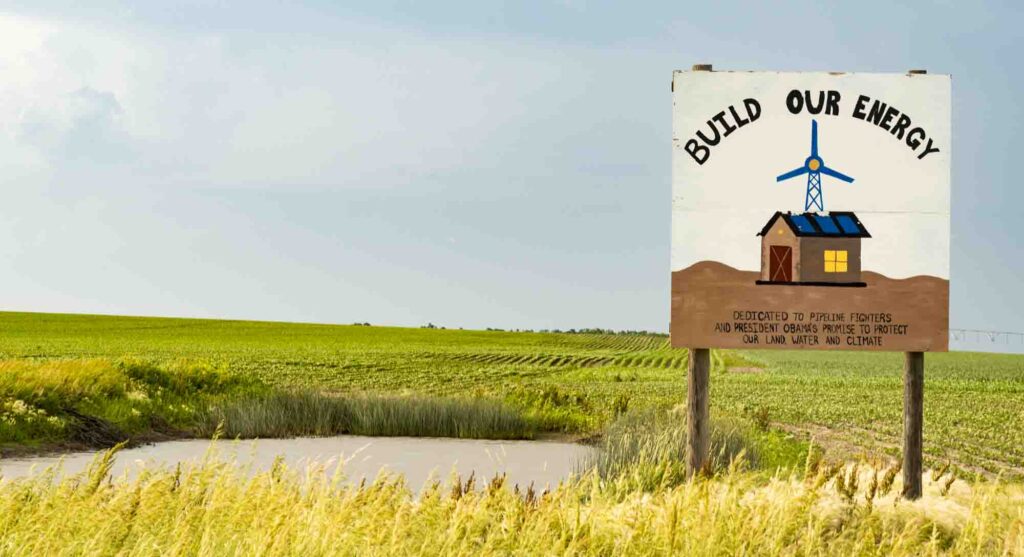
Over there is where Shannon and Kevin Graves live and where Ed Schultz changed his name. He was in favor of the pipeline until he interviewed Jane Kleeb, of Bold Alliance and Bold Nebraska. He then had coffee with the Graves and realized what the KXL meant to landowners like the Graves and noted how close it was to their home and their private well. About 4 years ago, he became a great advocate, opposed to the pipeline.
ALISON JONES In reading a Tulsa Law Review article, I learned that eminent domain was established due to the Transcontinental Railroad, promoted as what would make the whole country prosper. Everybody was all for it, by whatever means it took. Nobody cared about inserting any specific restrictions, nor what might happen in the middle of the country as the railroad routes were drawn. As far as most were concerned, that land was empty – and there are still so many people who do not understand where Nebraska is, or what it stands for.
That happened when they built the Transcontinental Railroads. Any local property rights were ignored. And now TransCanada is doing the same thing as they plan their pipeline.
TOM GENUNG You bet. It seems you got called to this issue, as did we ….
ALISON JONES Yes.
TOM GENUNG Well, we’re from northern Nebraska, up around O’Neill. We just happened to be employed in southern Nebraska, but since our family still lives up there, we know the Keystone XL route very well. When the proposed pipeline crossed some family ground, we started to focus on environmental issues involved. We’d never done anything like this before; but about 8 years ago, we got involved.
ALISON JONES How did Bold Nebraska get involved?
TOM GENUNG Jane Kleeb, its founder, lives in Hastings. We met at a TransCanada meeting. It was their meeting to convince landowners that this needed to go through their property – just like the Transcontinental Railroad. I mentioned the pipeline and my concerns, coming from northern Nebraska.
Jane realized that farmers and ranchers felt intimidated. She conceived Bold Nebraska as progressive in nature and supporting progressive candidates. Once she focused on the pipeline, Bold Nebraska was directed at TransCanada and stopping the KXL pipeline.
ALISON JONES What is the most important point to make regarding the KXL proposal?
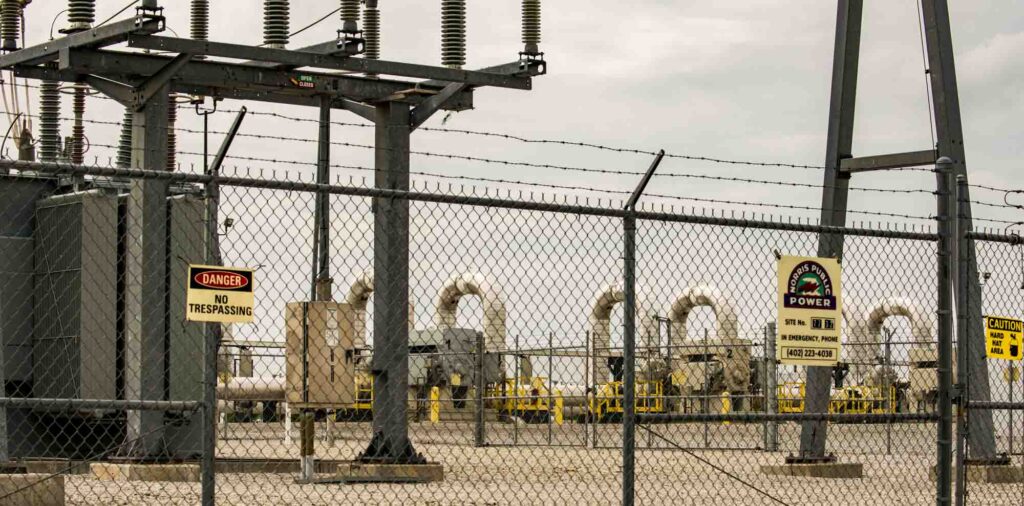
TOM GENUNG People must understand this pipeline is not a Canadian good-neighbor venture. It’s foreign-owned infrastructure. There are investors from many countries. Plus, this is not about oil for the U.S. It’s about Canada’s tar sands oil headed to refineries on the Gulf of Mexico, 100% owned by Saudi Arabia. This has nothing to do with energy independence for the U.S. We have enough oil in the United States from the Bakken and other places. We’re exporting oil, so the costs of dealing with tar sands makes no sense whatsoever. It never did.
ALISON JONES How do you get that message to people? Just one week ago at an O’Neill hearing, they were saying, “This will give us gas that we need and make it cheaper.” How do you reach those people?
TOM GENUNG Well, some will never change their minds, due to their political inclinations. Even people who want to learn are inundated with so much media information that probably they just believe the last thing they heard.
Fortunately, a couple weeks ago, two gentlemen from the West Coast were inspired to connect Bold Nebraska and their chapter of 350.org.
ALISON JONES Can you explain why the Public Service Commission/PSC can’t comment on safety issues? Why is debate only allowed on the planned route, and not on the safety issue?
TOM GENUNG I surmise that was set when guidelines were formed for the PSC to have ruling or influence on the application process for oil pipelines. But this is not an oil pipeline.
TransCanada applied to PSC, which had no rules on this until about 4 or 5 years ago. Prior to then, TransCanada worked with Gov. Heineman and Nebraska Department of Environmental Quality/DEQ, allowing TransCanada to use eminent domain on any individual they encountered where they wanted to put their pipe.
There was litigation over that, and once TransCanada realized that the US President would deny the permit, they backed off the litigation, So, it was never resolved whether TransCanada had the authority to use eminent domain. With Obama’s denial of the permit and TransCanada about to be beaten in court, they withdrew.
They’d say that they just stopped, because “withdrawal” would connote they were ending their permit process. However, they’re waiting until the US administration changes to apply to the PSC, because that’s their authority. Rules were set up in a narrow, short timeline; and safety was left out, either intentionally or because of the influence of TransCanada in the rulemaking process. But we’re involved too – both Bold Nebraska and landowners.
ALISON JONES It seems that Bold Nebraska is the difference between DAPL and KXL outcomes, plus KXL people involved using legal paths. They’ve studied the process. They’re not waiting until it’s too late (as happened with DAPL); and they’re going beyond DAPL’s sit-down protest at Standing Rock. It seems there’s more attention to legal process and working to change the system.
TOM GENUNG That’s a great point. Standing Rock issue was a Native issue.
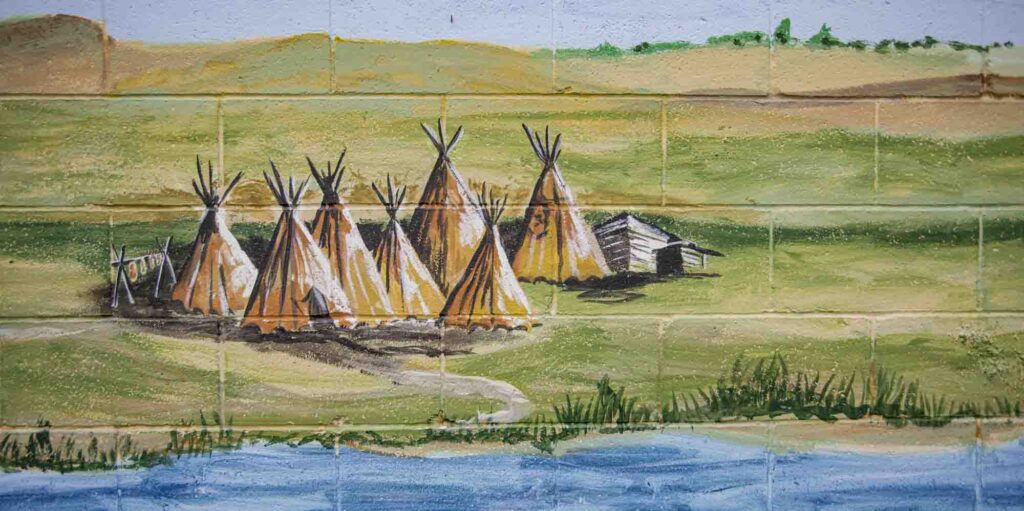
The DAPL landowners, farmers, ranchers and Native Americans never had a chance to be organized prior to construction. And TransCanada never needed to use the deceptive maneuvers they’re using now with KXL – although they did that a number of years ago with the original Keystone 1. Then they went through Nebraska picking off one landowner at a time. Nobody knew what was happening. It was a whole different story then.
ALISON JONES But now, there is much more awareness.
TOM GENUNG Awareness, and organization. It became very, very clear across Nebraska that we had to resist this thing, And then Bold Nebraska sponsored needed meetings and helped us get organized. That was Jane Kleeb.
ALISON JONES I know Sierra Club and 350.org are helping. Do they just lend their name, or do they help you organize and fundraise?
TOM GENUNG Four or five years ago, there was some involvement with 350, and Bold took part at a national level. Events were staged here, simultaneously with big events back in D.C., New York or on the West Coast. Jane helped organize and we’d have our photographers or media here. So little old Nebraska, right here at this little barn was on the stage with the rest of the world.
CATHIE GENUNG Many years ago Bill McKibben, head of 350.org, visited. As legal precedence, that was a big thing, because of eminent domain.
ALISON JONES I think having David Domina involved is making a big difference.
I was here in Nebraska this winter, to document the Platte River, a tributary to the Missouri and the Mississippi, Since the Mississippi River Basin is one of our NWNL 6 case study watersheds, I came to document sandhill cranes in the Platte plus prairie chickens and sharp-tailed grouse mating further north. It was cold in those early hours, but it was an amazing experience.
During that trip, I kept hearing folks talking about KXL, KXL, KXL. People said, “I’m a Republican, but don’t begin to think you can touch our aquifer!” I was intrigued, so I’m here.
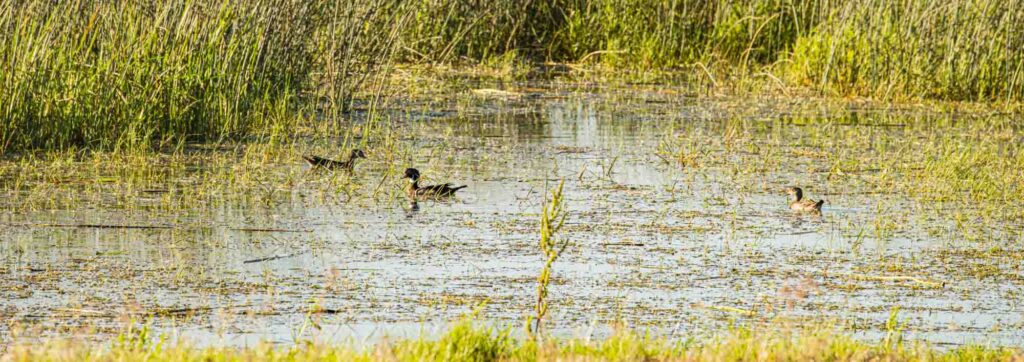
TOM GENUNG That’s an example of our unlikely, but amazing coalition. It’s like your chance meeting with Jennifer Troester and her son Barrett – and then meeting Jeanne Crumley. We have an unlikely coalition of urban, rural and Native people, farmers and ranchers.
A great lady, named Faith Spotted Eagle was a main instigator of meetings called Protect the Sacred, mostly in South Dakota. At those meetings landowners who took part didn’t feel any different than Native people did when they were the only ones that lived here.
ALISON JONES Is that how the Cowboy-Indian Alliance started?
TOM GENUNG Yes. That led to the first Spirit Camp, held where Art Tanderup showed you his medicine wheel. That was the first meeting and it led into the spirit camp outside of Winner, South Dakota that was occupied for 2 or 3 years. In April 2016, it moved to Standing Rock’s sacred stone camp. There is a wonderful thread of consistency throughout this great story.
ALISON JONES It is a beautiful story. I’ve talked to some people who feel that Standing Rock ended up with such terror of being overpowered by militia that they don’t want to get involved. They’re scared. Those police have equipment they use to plow right through crowds. So, some step out of the way, but others say, “I’m so empowered by what happened there.”
TOM GENUNG The Cowboy Indian Alliance reflects that unlikely coalition. It’s about doing the right thing with the right people. Fortunately for us, Sierra Club, 350.org and NRDC are helping us. Their level of commitment is just epic.
ALISON JONES How do they help? via organization techniques, fundraising or speaking out for you?
TOM GENUNG Some help is financial. The rest is shared resources and expertise. A month ago, Cathy, a regional manager for Denver’s Sierra Club, helped with organization. The KXL threat is important to many people, organizations, and other environmental groups. It’s symbolic, and yet it’s very, very real. Much is happening.
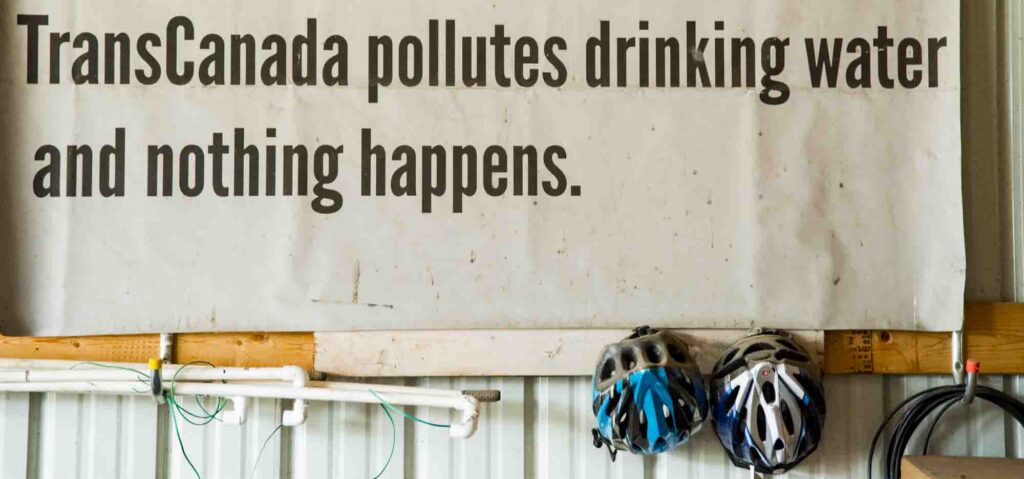
CATHIE GENUNG Art Tanderup and Jeanne Crumly both feel kind of isolated.
ALISON JONES They’re surrounded by neighbors who have agreed to pipeline easements.
CATHIE GENUNG Oh yes, they’re very much in the minority. It’s tough on them.
TOM GENUNG Yet, anytime several of us get together, we feel pretty good about things. My role the last couple of months is to be wherever I need to be to help. We’re working specifically with all 11 counties. They’re hearing that we’re concerned about the KXL pipeline.
ALISON JONES What do you say to people who think that this pipeline means that the gas prices are going to go down? Do they listen – or are you able to have a coherent discussion with lawmakers, commissioners or the decision-makers? Do they listen?
TOM GENUNG Well, we hope that the PSC, being 5 elected people, hear what we’re saying. They’ve received much input from many different people opposed to the pipeline for many varied reasons. So far people have talked about safety and other concerns. But the PSC won’t hear anything about safety. That’s where the legal part comes into play. Everybody should come contribute to the public comments.
ALISON JONES Yes, that is our privilege.
TOM GENUNG County officials have been swept away and bullied by TransCanada people saying, “You need to let us come do whatever we want. If you need a road-haul agreement, we’ll agree to that. If you don’t agree, we’ll probably just sue you.”
ALISON JONES Do you know many Nebraskans are for the pipeline vs. against it?
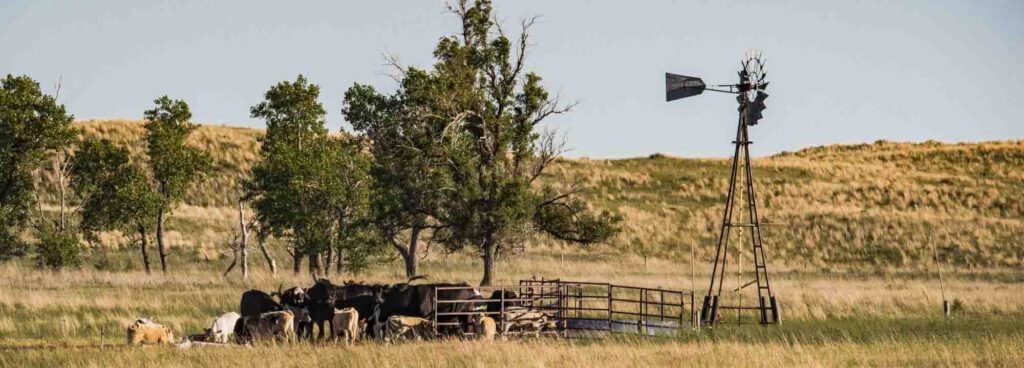
TOM GENUNG No. I just know people continue to be misinformed. It’s like an illness when you don’t know anything about until it affects you directly. There are people affected, but they don’t know the facts. And, importantly, they forget about the threat to the aquifer. And they ask, “Oh, the way, what about this eminent domain? I don’t know that I like that, but how does that fit in?”
Well, it fits into the issue, because a foreign corporation is trying to use eminent domain for private gain. Folks respond, “Oh, well, maybe that isn’t a good idea, but I sure could stand to have lower gas prices, so I think I’d be in favor of lower gas prices.”
But, Alison, we have $2 gas here now, and we don’t have any dog-gone pipeline. I guess we didn’t need a pipeline to begin with.
CATHIE GENUNG Many people feel that if the KXL pipeline is out of the Sandhills and away from the Ogallala Aquifer that they can live with that.
ALISON JONES What happens then with TransCanada’s buyouts already paid to landowners here on this route?
CATHIE GENUNG TransCanada still owns rights to that the land. They could sell it to another pipeline. There’s been speculation – and I think it’s just speculation – that they could build a railway there, because they own the land. The big things are the aquifer, the Sandhills and eminent domain.
ALISON JONES Is this really about water?
CATHIE GENUNG There are people who’ve felt from the very beginning that this is all about water. Water is more valuable right now than oil, and foreign companies own a lot of the southwest where it’s dry. So why not pump water from the aquifer? People say that’s a conspiracy theory. I feel it could be very true.
ALISON JONES Thoughts, sir?
TOM GENUNG Well, my thought is “No KXL.” Many people fall into the trap of asking, “Well, why don’t they just build a refinery in Canada?” As soon as you ask questions, then those organizations come back with some cockamamy answer. Let’s just say “NO KXL” to begin with. Let’s say, “TransCanada, you’re not wanted here, so leave. Go home. Get away!”
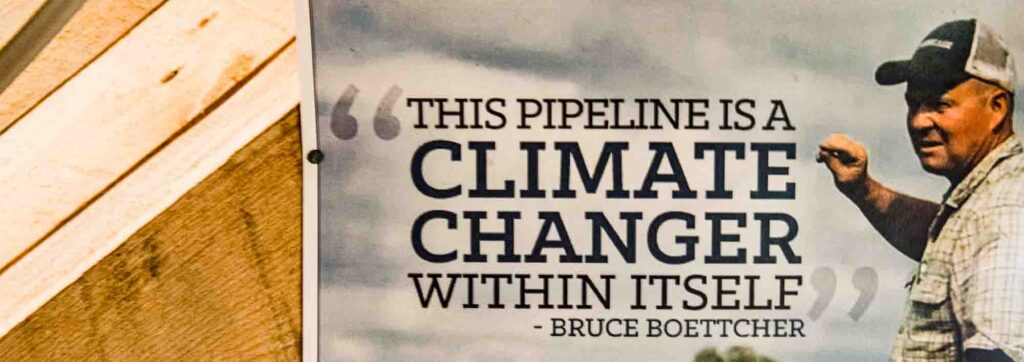
ALISON JONES You mentioned TransCanada is not just Canadian-owned. What other countries are invested in TransCanada?
TOM GENUNG Who’d know? I’d have to research that. I’ve just heard hearsay that China’s involved. Who knows? Russia could be involved. Who knows? But it’s not about the Country of Canada. It’s about investors in a big business.
ALISON JONES I understand the Koch Brothers are also involved.
TOM GENUNG Well, yes. There is a legislative entity funded by the Koch brothers, Exxon-Mobil, pharmaceutical companies and others. We just hope that the Public Service Commission/PSC is pure and not corrupt. Unless they are corrupt, there’s no way that committee can do anything except deny the application based upon what they’ve heard and collected as information.
ALISON JONES Is there any likelihood of TransCanada just using the original Keystone 1 route? There’s room there, and they have easement approval for another pipeline in that routing.
TOM GENUNG It’s said that they could.
ALISON JONES Is there a solution could make both you and TransCanada happy?
TOM GENUNG You’re asking me to compromise, but I won’t. I am opposed to pipelines.
This process was corrupt to begin with, and there’s no logical reason that the proposed KXL pipeline is needed—it’s not in the public’s interests whatsoever.
ALISON JONES What would you like to see stressed in the media that would be helpful in educating people as to the consequences?
TOM GENUNG The proposed KXL pipeline is not needed. It does nothing for the public good.
ALISON JONES That affects the eminent domain consideration.
TOM GENUNG Right.
CATHIE GENUNG That oil’s so dirty, even after it’s refined, it can’t be used in the U.S., because of our emission standards.
ALISON JONES Concerning the Ogallala Aquifer running underneath KXL’s route, I hear that if the oil leaks and goes down into the aquifer, there’d be no way to detect it, nor to clean it.
TOM GENUNG Protecting the water was our original concern.
ALISON JONES That’s something everyone can understand. The disturbance of Nebraska’s sandy soil – although of utmost importance to the farmers – is a complex aspect to put into a soundbite. Jeanne Crumly showed me her pickle jars that display the varied levels of soil, each in scale to how they are layered in the ground.
I saw it, but it’s hard to explain in words. Better are some simple, straight-forward mottos, like “The soil doesn’t stay here;” and “The jobs would only be temporary;” and “We don’t want to allow transportation of more fossil fuels that contribute to climate change.”
TOM GENUNG Many aspects can be talked about; but it seems lawmakers are so busy that most of them only listen to whatever media that they like.
ALISON JONES Is there messaging or a sense of hope motivating attention to this issue. Are there any “big cannons in the back room” to be pulled out to protect Nebraska communities?
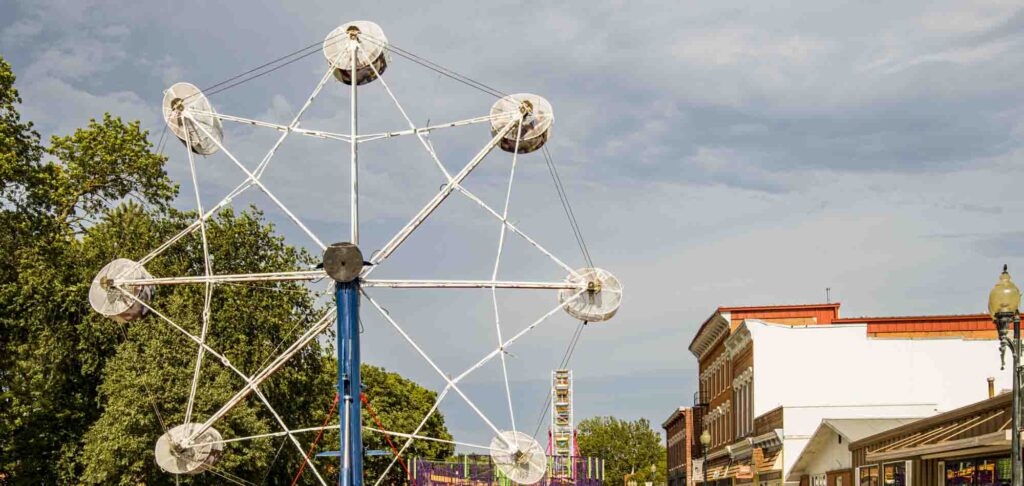
TOM GENUNG Well, Domina Law is our best hope.
ALISON JONES Yes, it seems their advocacy on the eminent domain issue could be a landmark decision affecting many environmental issues in this country, not just this pipeline.
TOM GENUNG Yes. When we realized eminent domain addresses land “for public use,” we hired Domina’s company and attended many training sessions in O’Neill, Albion, and York to have a better understanding.
Domina taught us about rights, landowners’ rights and that the eminent domain is a process and not nearly as scary as we all thought. Early on, Cathie’s mom was intimidated by TransCanada, when they basically said, “We’re going to take your land: so sign this easement, or we will take it by eminent domain, and you’ll get nothing.”
But, for one thing, the eminent domain process allows you to be paid. Plus, it’s a process that you ca win, because it’s a process as in a court of law, but it’s with your peers and neighbors.
ALISON JONES I hadn’t heard about the training sessions.
TOM GENUNG Dave Domina and Brian E. Jorde led them. Brian is the lead person now, but Dave is right there. We had an epic meeting with them both the other day. But many people don’t know about those meetings, and they plan to just show up for public comment.
ALISON JONES As you say, most people don’t realize that this is an issue of eminent domain. This has fascinated me the most on this expedition because it seems there is a lack of understanding eminent domain across the country. The eminent domain principle is a big concept and it’s critical that it be understood.
Bill Blake, on the Board of Realtors in Lincoln, is a specialist in eminent domain. I heard he said, “Our KXL fight doesn’t stand much of a chance: but we cannot walk away from it and let it just happen. We’ve got to fight it.” That’s a great attitude.
Tom, I’ve met many great Nebraskans on this expedition, and you are certainly among them. I feel quite sure your love of the land and determination to stand up for your rights will win. Best of luck!
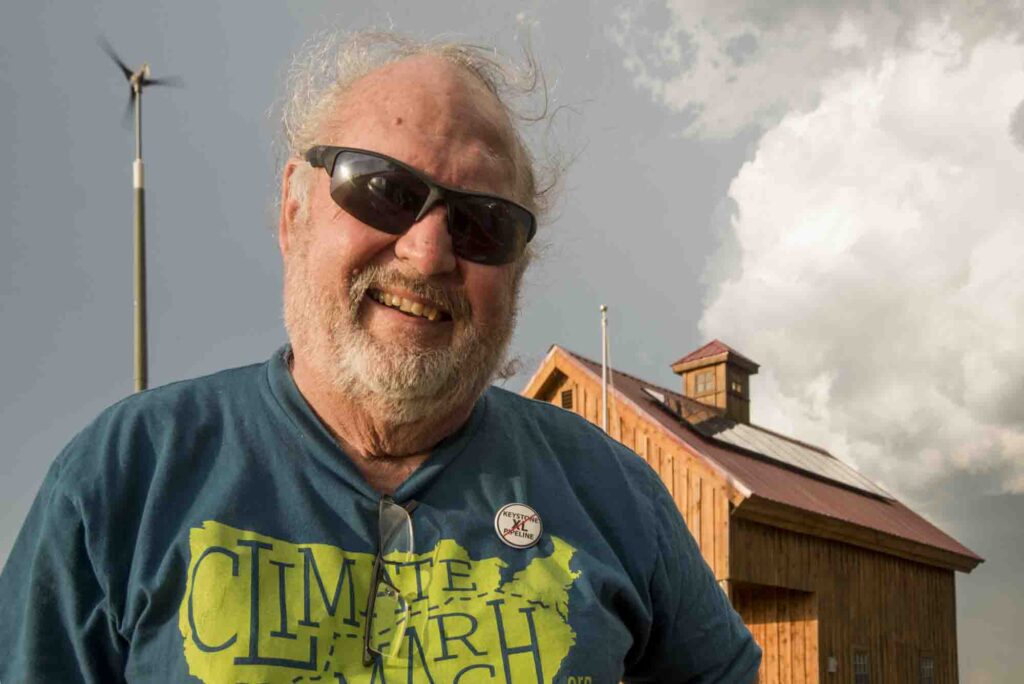
Posted by NWNL on February 19, 2024.
Transcription edited and condensed for clarity by Alison M. Jones.
All images © Alison M. Jones, unless otherwise noted. All rights reserved.
